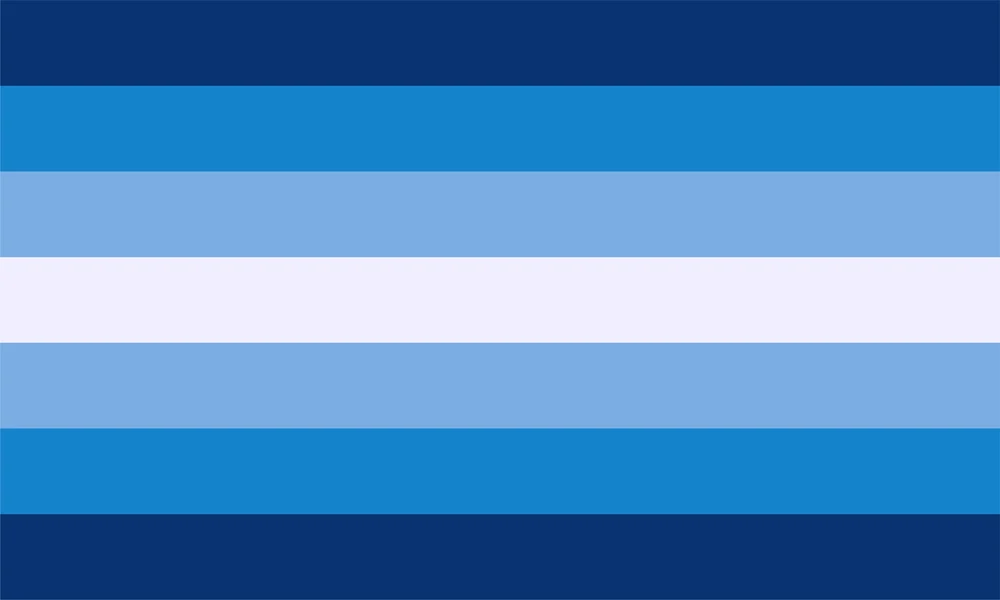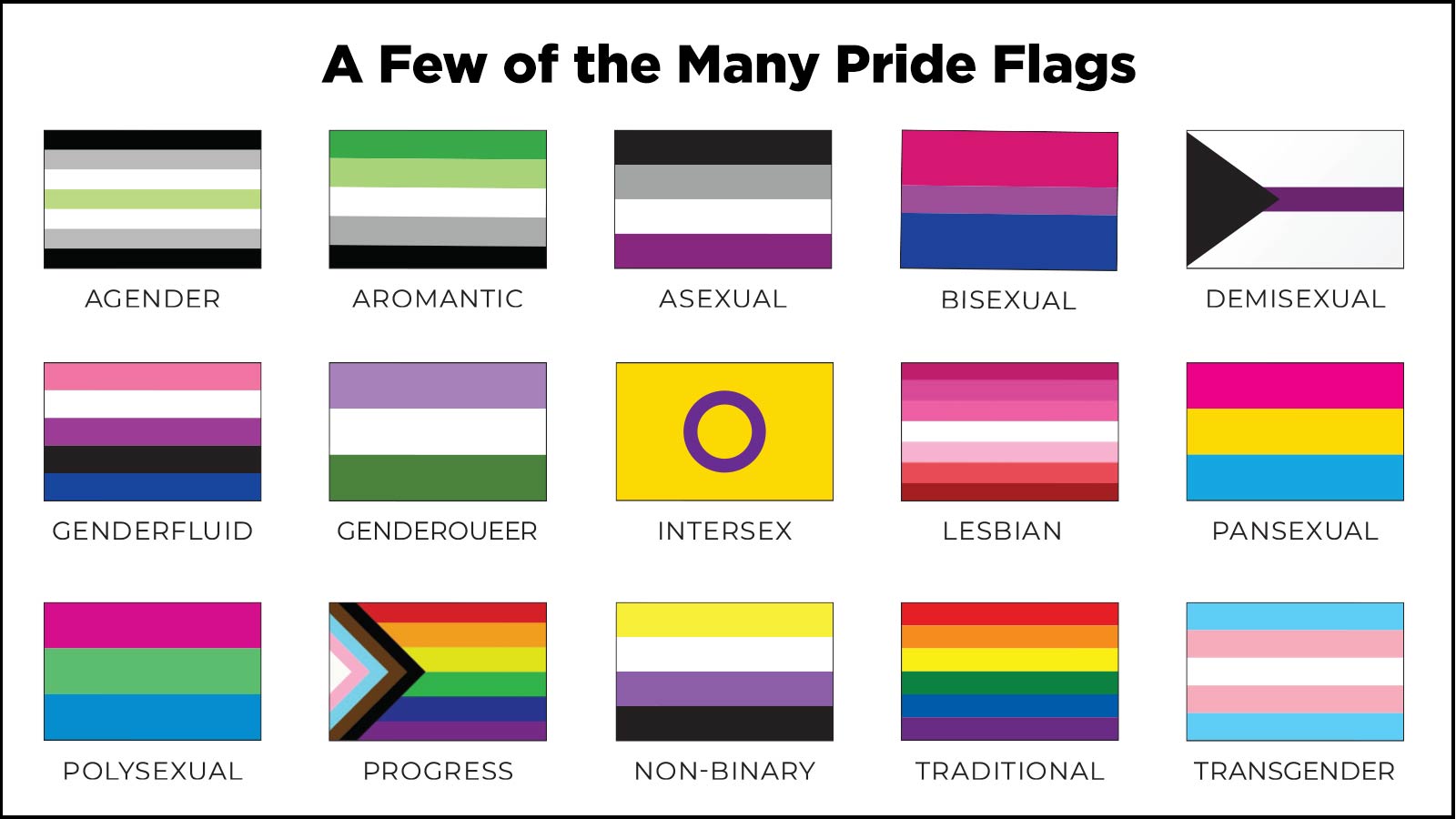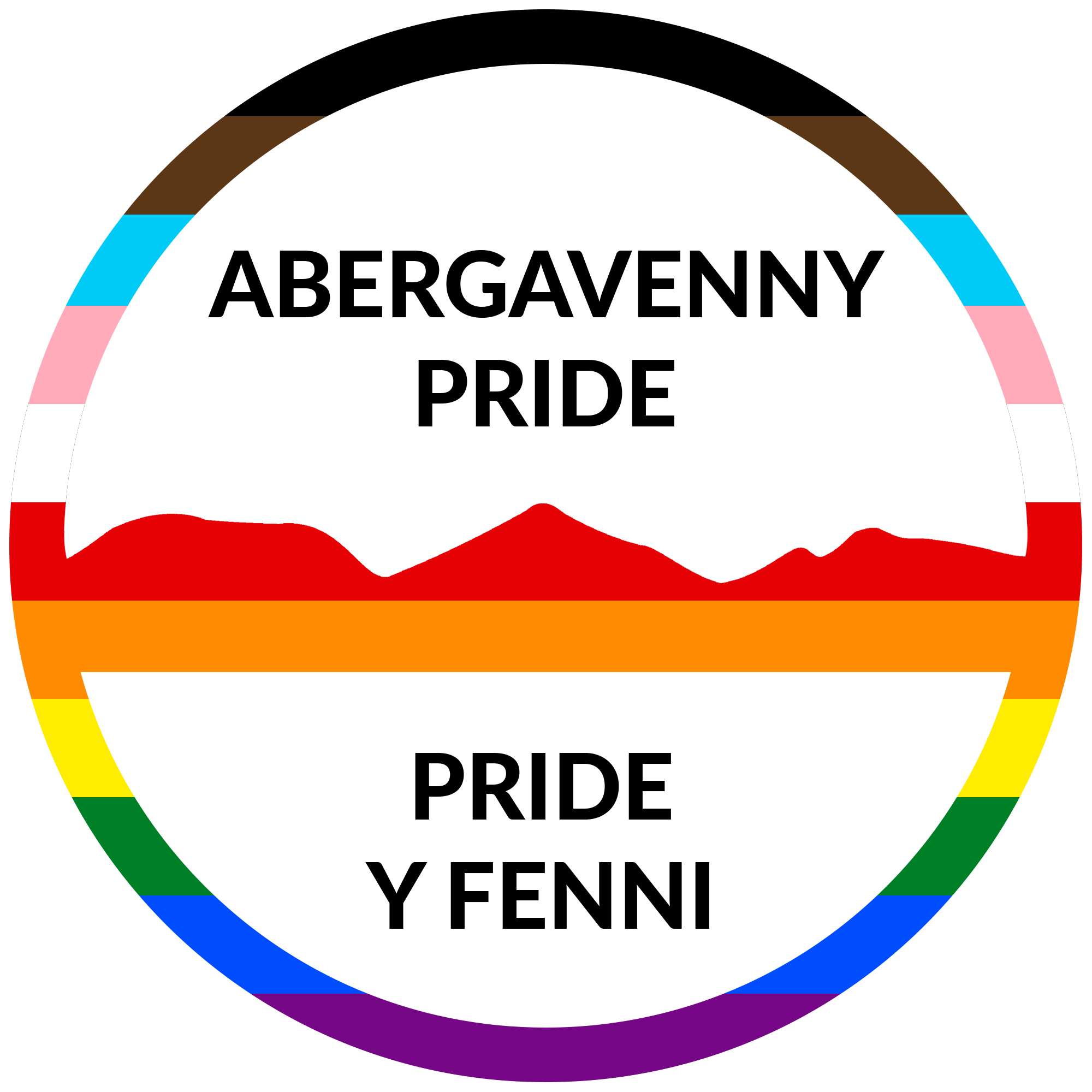December
Blog Chapters
December Edition
Hello and welcome to the December edition of the Abergavenny Pride blog. This will be the last issue for 2023, and we will begin to look at 2024 very soon!!
December 01st is also known as World Aids day. World AIDS Day exists to shine a light on the real experiences of people living with HIV today, while celebrating the strength, resilience and diversity of the communities most affected. It is a moment to inspire the leadership needed to create a future where HIV doesn’t stand in the way of anyone’s life. The red ribbon is the universal symbol of awareness and support for people living with HIV. It was first devised in 1991, when twelve artists met to discuss a new project for Visual AIDS, a New York HIV-awareness arts organisation.
It was there that they came up with what would become one of the most recognised symbols of the decade: the red ribbon, worn to signify awareness and support for people living with HIV. The artists wanted to create a visual expression of compassion for people living with HIV and chose red for its boldness, and for its symbolic associations with passion, the heart and love.
10th December 2023 marks the 75th anniversary of one of the world’s most ground-breaking global pledges: the Universal Declaration of Human Rights (UDHR). This landmark document enshrines the inalienable rights that everyone is entitled to as a human being – regardless of race, colour, religion, sex, language, political or other opinion, national or social origin, property, birth or other status.
The Declaration was proclaimed by the United Nations General Assembly in Paris on 10 December 1948 and sets out, for the first time, fundamental human rights to be universally protected. Available in more than 500 languages, it is the most translated document in the world. A year-long initiative focusing on universality, progress and engagement, will culminate in a high-level event in December 2023, which will announce global pledges and ideas for a vision for the future of human rights – https://www.un.org/en/observances/human-rights-day



The 24th May marks Pansexual and Panromantic awareness and visibility day. These are two terms that not everyone might be conscious of so an awareness and visibility day such as this is really important. So, what do these two terms mean?
Pansexual people – people who are attracted to others regardless of their gender identity or biological sex.
Panromantic people – people who are romantically (not necessarily sexually) attracted to others regardless of their gender identity or biological sex.
It’s important to remember that being a pansexual or a pan romantic person doesn’t define all of a person. It’s just one aspect of them. But it’s an important part to understand and respect. Difference and diversity is what makes the world a fascinating place to be a part of!
Christmas is said to be the most wonderful time of the year, but for some it can be a very difficult time. As queer people we are often no longer in touch with family members, have a difficult relationship with family members or don’t feel safe in their hometowns, you may not be able to be yourself, you may be forced to bond with family members that may be abusive, conversations could lead to interrogations and many other things.
For safety and mutual understanding, queer people will usually move to larger cities and towns where there is a large queer presence. We often form alternative families, which can result in deeper connections, but temporarily removing yourself from these safety nets over Christmas can be extremely lonely, whilst they return home.
For Trans and Non-Binary persons, Christmas can be a particularly tough time. They will often be misgendered, called their birth names by extended family and town folk, which ultimately strips away their identity that they have built and lived away from home. Well meaning presents can be difficult to receive, especially if it doesn’t match your gender identity.
The LGBT foundation has set up a Christmas Survival Guide with many hints and tips and links to services that you may find useful – LGBT Foundation – LGBT Christmas Survival Guide.
We would also like to share some other charities and support services that you may find useful not just over the Christmas period but all year round.
Switchboard 0800 0119 100 hello@switchboard.lgbt
Shelter Cymru 0800 0495 495
LGBT Cymru 0800 917 9996 sam@lgbtcymru.org.uk
LGBT Foundation 0345 330 3030 helpline@lgbt.foundation
Galop 0800 999 5428 help@galop.org.uk
Childline 0800 1111
And many others nationally and regionally can be found here – Pride Month: LGBTQ+ helplines and resource list – Unite UK (uniteuk1.com)
How ever you are spending this month, everyone here at Abergavenny Pride would like to wish you all a very merry Christmas and a Happy New Year!!




A Moment of History
World AIDS day is a global movement to unite people in the fight against HIV and AIDS. Since 1988, communities have stood together on World AIDS Day to show strength and solidarity against HIV stigma and to remember the lives lost.
In the UK, more than 105,00 people are living with HIV. Globally, an estimated 38 million people live with the virus. More than 35 million people have died of HIV or AIDS related illnesses in the past 40 years, making it one of the destructive pandemics in history. (About – World AIDS Day)
What is HIV?
- HIV (Human Immunodeficiency Virus) is a virus that damages the cells in your immune system that weakens your body’s defence system so that it can’t fight everyday infections and diseases.
- AIDS (Acquired Immune Deficiency Syndrome) is the name used to describe a number of potentially life-threatening infections and illnesses that happen when your immune system has been severely damaged by HIV.
- While AIDS can’t be transmitted from one person to another, HIV can.
- There is currently no cure for HIV, but there are very effective drug treatments that enable most people with the virus to live a long and healthy life.
- With an early diagnosis and effective treatments, most people with HIV won’t develop any AIDS-related illnesses and will live a near-normal lifespan.
Most people with HIV look and feel healthy for long time. They may not know they have the virus, but they can still pass it on to others through semen, blood, and vaginal fluids.
REMEMBER – you CANNOT get HIV from kissing, touching, sharing cups, plates, spoons and forks, sneezing, toilet seats, insect or animal bites, or swimming pools!!!
Causes of HIV Infection
- HIV is found in the body fluids of an infected person. This includes semen, vaginal and anal fluids, blood, and breast milk.
- It’s a fragile virus and doesn’t survive outside the body for long. HIV can’t be transmitted through sweat, urine, or saliva.
- The most common way of getting HIV in the UK is through having anal or vaginal sex without a condom.
- Other ways of getting HIV include:
- sharing needles, syringes, or other injecting equipment
- transmission from mother to baby during pregnancy, birth, or breastfeeding
- The chance of getting HIV through oral sex is very low and will be dependent on many things, such as whether you receive or give oral sex and the oral hygiene of the person giving the oral sex.
Treatment for HIV
Antiretroviral medications are used to treat HIV. They work by stopping the virus replicating in the body, allowing the immune system to repair itself and preventing further damage. These come in the form of tablets, which need to be taken every day.
HIV is able to develop resistance to a single HIV drug very easily, but taking a combination of different drugs makes this much less likely. Most people with HIV take a combination of drugs – it’s vital these are taken every day as recommended by your doctor.
The goal of HIV treatment is to have an undetectable viral load. This means the level of HIV virus in your body is low enough to not be detected by a test. People who have undetectable viral loads cannot pass on the virus during sex. You may see the campaign U=U which stands for Undetectable=Untransmissable, which is an important message as there are still some people who think that sex with any HIV positive person is dangerous.
There are also prevention medications available. There are 2 types, the first is PrEP or Pre-Exposure Prophylaxis and is a daily prevention medication to be taken prior to possible HIV exposure. This is for people without HIV who have had condomless sex with a partner with HIV, had condomless sex with a partner of unknown HIV status or have shared needles. It takes around 7 days to reach a high level of HIV protection, but daily PrEP can reduce the risk of HIV transmission from sex by more than 90% and from shared needles by more than 70%,
The other is PEP or Post-Exposure Prophylaxis and is to be used in emergency situations, and within 72 hours of possible HIV exposure. A full course lasts for 28 days and should be used by people without HIV who have had condomless sex with a partner of unknown HIV status, shared needles, had a workplace injury or experienced sexual assault. When taken correctly, PEP can reduce the risk of HIV transmission by almost 80%, its still important to use condoms, other barrier methods, and cautious injection practices.
If for any reason you are thinking about having sex without a condom, think about the following:
- You can have an STI or HIV but look and feel well, and have no symptoms.
- Many people will not know for sure whether they or their partner have an STI.
- The only way to find out if you have an STI is to have a test.
HIV/AIDS in the present day
HIV is no longer the death sentence that it used to be, which is a sign of how far we have come already, but it is still a cost to public health resources and can lead to complications with other conditions. The Welsh Government has committed to a target of zero new HIV transmissions by 2030. To achieve that, a variety of measures are being rolled out across Wales to make sure that people have access to information and support that they need to remain free of HIV. A brief summary of the Welsh HIV Action Plan is here: https://fasttrack.wales/a-short-guide-to-the-HIV-action-plan/
Fast Track Wales is a charity working with the Welsh Government and NHS Wales to reach out to a broad population to facilitate widespread testing in community venues and postal HIV tests for those who may live in more rural areas or who would be uncomfortable attending a test centre.
While people with HIV can live normal lives, treatment does involve taking regular drugs which need regular monitoring, so its better if people know their HIV status, and if they are positive, to make sure that they look after their health to protect partners. Equally, if people are HIV-negative, it’s important that they know how to protect themselves and make sure that they stay negative.
Details of how to access PrEP and HIV home testing in Wales, along with other sources of information and advice, are here: https://fasttrack.wales/resources-services/
Specific helplines for people seeking advice or support on AIDS and HIV issues are here: https://fasttrack.wales/useful-resources-and-relevant-services/
Below is a very brief modern timeline of Transgender History.
1951 Roberta Cowell is the first known British trans woman to undergo reassignment surgery and have her birth certificate changed.
1966 Trans support group, The Beaumont Society, is founded to provide information and education to the general public, the medical and legal professions on ‘transvestism’ and to encourage research aimed at fuller understanding.
1969 The Stonewall riots in America – a series of spontaneous, violent demonstrations by members of the LGBT community against a police raid on the Stonewall Inn, Manhattan. This key event triggers the modern LGBT liberation movement in the US and beyond.
1970 The Corbett v Corbett divorce case establishes a precedent that a person’s sex cannot legally be changed from that which is assigned at birth.
1972 The first Pride in London is held, attracting around 2000 participants
1974 Jan Morris, Welsh historian, author and travel writer, releases Conundrum, a personal account of her transition.
Stephen Whittle, trans man and prominent activist co-founds a Manchester based “TV/TS” group; a group for trans people.
The First National TV/TS (Transvestite/Transsexual Conference) is held in Leeds.
1980 British documentary ‘A Change of Sex’ is aired on the BBC following the social and medical transition of Julia Grant. The BBC also gives an inside view of the Gender Identity Clinic at Charing Cross Hospital in London.
1986 Mark Rees, a trans-man, brings a case to the European Court of Human Rights, stating that UK law prevented him from gaining legal status recognising him as male. The case was lost but the court noted the seriousness of the issues facing trans people.
1987 The International Foundation for Gender Education (IFGE) is founded to promote acceptance for transgender people.
1992 Following a fringe meeting at the Liberal Democrat Federal Conference in 1991, Press For Change, a key lobbying and legal support organisation for trans people in the UK, is established.
1995 Mermaids is founded by a group of parents brought together by their children’s longstanding gender issues. The UK charity offers appropriate resources to young people, their families and carers, and professionals working with gender variant young people.
1996 The landmark case – P vs S and Cornwall County Council – finds that an employee who was about to undergo gender reassignment was wrongfully dismissed. It was the first piece of case law, anywhere in the world, which prevented discrimination in employment or vocational education because someone is trans.
1999 Trans Day of Remembrance is founded in the USA, and then later in the UK and worldwide, to memorialise those who have been murdered as a result of transphobia and to bring attention to the continued violence endured by the trans community.
2002 In the Goodwin v the United Kingdom case, judges ruled that the UK Government should accommodate the needs of trans people by issuing new birth certificates and permitting marriage to someone of the opposite gender.
2004 The Gender Recognition Act 2004 is passed giving trans people full legal recognition in their appropriate gender. The Act allows trans people to acquire a new birth certificate, although gender options are still limited to ‘male’ or ‘female’.
2005 Transgender Europe is founded. The organisation campaigns for the equality of all trans people in Europe.
2007 ‘Engendered Penalties Transsexual and Transgender People’s Experience of Inequality and Discrimination’ is published. This is instrumental in ensuring the inclusion of trans people in the remit of the UK’s new Commission for Equalities and Human Rights
2010 The Equality Act 2010 officially adds gender reassignment as a protected characteristic.
2013 The first Trans Pride event takes place in Brighton.
2018 A consultation on reform of the Gender Recognition Act receives over 100,000 responses, with the vast majority supportive of reforms to the Act that would improve trans people’s lives.
2021 The England and Wales census includes questions on gender identity and sexual orientation for the first time, meaning that data can be gathered on the numbers of LGBT people across the countries.
You can find out more online or by grabbing a copy of ‘Transgender History, The roots of Today’s Revolution’ by Susan Stryker.
Fly That Flag
This months flag is the Gay Mans flag. Various flags have been used to symbolise gay man. Rainbow flags have been used since 1978 to represent both gay men and subsequently, the LGBTQ+ community as a whole. Since the 2010’s there have been several specifically designed flags to represent the gay male community.
The first known gay male flag was published online in October 2018 on a Russian Webiste. It was designed by Valentin Belyaev, and was based on the Lesbian flag, and was said to symbolise the attraction of men to each other and the diversity of the gay community itslef. It is also known as the Uranian flag.
In 2016, the first gay man flag to be published online was designed by Mod Hermy of DeviantART, and posted on Tumblr on August 24, 2016 and again was based on the pink lesbian flag. Another flag design for gay men, featuring green, teal, white, blue and purple stripes, was designed by Tumblr user gayflagblog, a disbaled trans man. Two Versions with seven and five stripes respectively were released in 2019. The colours from turquoise to green represent community, healing and joy, the white stripe in the middle is an iteration of Monica Helm’s trans flag design and includes people who are transgender, intersex, gender non-conforming or non-bonary and the colours blue through to purple represent pure love, strength and diversity. This design is known as the Vincian Flag.



